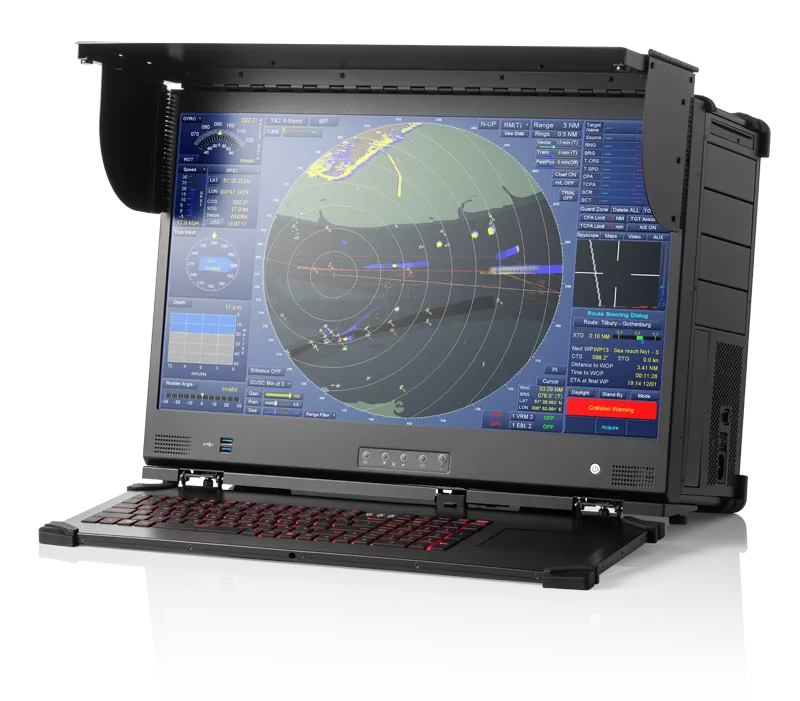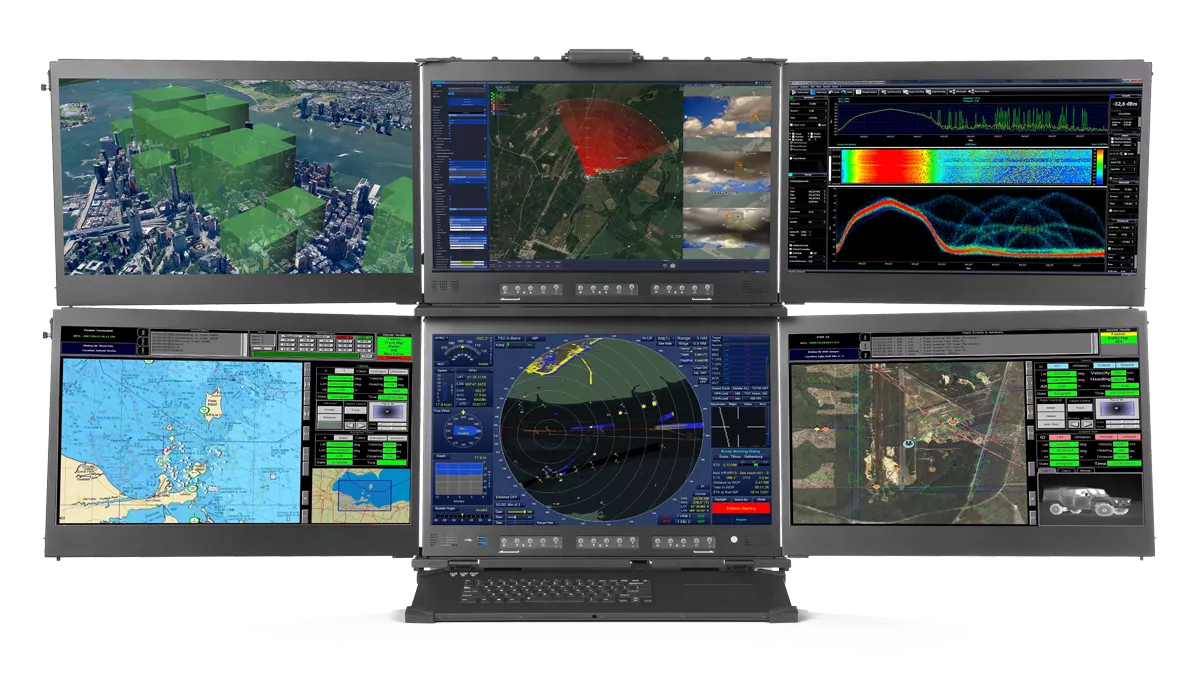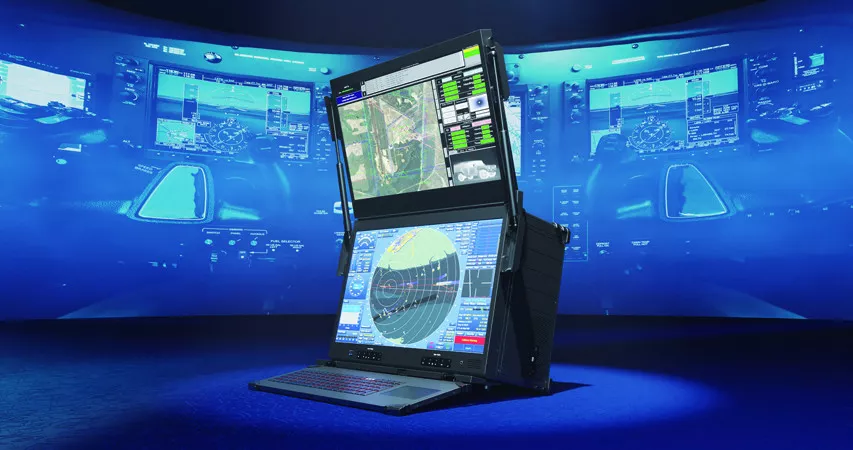Rugged AI at the Edge — MegaPAC with Dual H200 NVL GPUs
AI Everywhere: Why Tomorrow's Workloads Demand More Today
Artificial Intelligence is no longer confined to research labs or datacenters. It's transforming industries across defense, healthcare, energy, aerospace, and beyond. Large language models (LLMs), computer vision systems, and generative AI tools are powering applications that were previously unimaginable, enabling real-time decision-making, simulation, and automation at massive scale. But as applications evolve, so do the models. Many current-generation AI models now surpass 100 billion parameters, with some pushing into the trillions. Supporting these architectures isn't just about scaling CPUs or adding more cloud resources. It requires a fundamental leap in system design, with greater memory capacity, faster interconnect bandwidth, and significantly higher GPU throughput—especially when deploying AI workloads outside of traditional infrastructure.
Modern AI workloads, particularly those involving LLMs, computer vision, and multimodal processing, demand capabilities that conventional hardware often can't deliver. At the same time, many mission-critical deployments are shifting to the edge, closer to where data is generated. Whether for defense operations, remote research, or industrial environments, AI must now run reliably in rugged, air-gapped, and mobile conditions. Defense systems, for example, increasingly rely on AI to analyze real-time sensor data, assist with threat detection, or simulate battlefield conditions. In aerospace, LLMs and vision models power tasks like signal processing, drone control, and autonomous navigation—often in places far removed from centralized infrastructure.
Meeting these needs requires a rugged, high-performance AI workstation that can run large models and complex inference workloads directly at the edge. That's exactly what the MegaPAC delivers.

Portable AI at Full Scale: Acme's MegaPAC Solution
This high-performance configuration was developed in collaboration with a leading organization specializing in advanced data platforms and mission-driven AI solutions. To meet next-generation requirements, Acme Portable designed a specialized MegaPAC system equipped with dual NVIDIA H200 NVL GPUs. This rugged portable system features GPUs connected via NVLink, paired with 3TB of DDR5 system memory, and supports either Dual Xeon Scalable or Dual 5th Gen AMD EPYC processors for flexible, high-core-count compute. It brings datacenter-class AI performance to field deployments, air-gapped environments, and mobile command operations. Housed in a rugged, transportable enclosure, the MegaPAC is built to perform reliably in the most demanding operational settings.
At the core of this configuration is a dual NVIDIA H200 NVL GPU setup, connected via NVLink. Each H200 GPU provides 141GB of HBM3e memory and 4.8TB/s of memory bandwidth. Together, the GPUs offer 282GB of shared memory and 900GB/s of direct GPU-to-GPU communication. This architecture is ideal for LLM inference, large-batch training, multimodal fusion, and real-time video or sensor data analysis in deployed environments.
The Dual H200 NVL Advantage
Each H200 GPU features:
- 141GB of HBM3e memory, delivering 4.8TB/s of bandwidth, critical for large model inference, massive datasets, and high-resolution input processing
- NVLink interconnect at 900GB/s, enabling near-unified memory access and efficient model parallelism between GPUs
- Over 3 PFLOPS of FP8 performance (with sparsity) across the dual-GPU setup, ideal for transformer models, generative AI, and real-time vision applications
This configuration provides:
- Up to 1.9× faster LLM inference compared to H100 GPUs (e.g., Llama2-70B)
- Larger batch sizes and accelerated training with up to 4× throughput gains
- Memory headroom for massive context windows, multi-modal tasks, and complex simulations
The result: an all-in-one rugged portable system that brings supercomputing power to the field.
Why the H200 NVL Platform Changes the Game
The H200 NVL represents a major leap in both memory and performance. Compared to the H100, it nearly doubles memory capacity and improves bandwidth by 1.4 times, providing critical advantages for today's large-scale AI models. With support for FP8, BF16, and MIG (Multi-Instance GPU) partitioning, the dual H200 setup can power multiple simultaneous AI workloads or operate as a unified engine for large-scale inference. This makes it especially valuable for secure, multi-tenant, or edge-based deployments. The platform is also designed for easy integration. It runs on a standard dual-slot PCIe interface, allowing organizations to upgrade without overhauling their infrastructure.
The H200 NVL builds on NVIDIA's Hopper architecture, offering:
- Nearly 2× the memory of H100 and 1.4× greater bandwidth
- Up to 3.34 PFLOPS of FP8 tensor performance per GPU
- Support for Multi-Instance GPU (MIG), enabling up to 7 isolated GPU instances per card, each capable of running smaller AI workloads independently
In real-world use, that translates to:
- Up to 1.9× faster inference on LLMs like Llama2-70B and GPT-3 175B
- Up to 4× throughput improvements in LLM training (e.g., larger batch sizes of 32 vs. 8)
- Up to 110× faster time-to-result in HPC tasks compared to CPU-based systems
Even in energy efficiency, the H200 NVL stands out. It delivers up to 50 percent lower power consumption per workload compared to the H100, helping reduce operational costs and increase deployment flexibility.

The Future of AI Is Here and It's Portable
What truly sets the MegaPAC apart is its mobility. Designed for field deployment, this all-in-one system functions as a complete portable AI lab or mobile command and control center. It can be deployed in forward-operating bases, UAV ground stations, pop-up labs, or secure facilities with limited infrastructure. Its modular design supports up to four H200 NVL GPUs and is fully compatible with scalable NVMe storage, high-core-count CPUs, and multi-GPU AI frameworks. Whether you're running inference on sensitive data, training models in the field, or deploying multimodal workloads at the edge, the MegaPAC puts enterprise-grade AI right where it's needed.
Built to Perform Beyond the Datacenter
Engineered for AI in the wild, Acme Portable's MegaPAC delivers serious performance in a rugged, go-anywhere chassis. It features 3TB of DDR5 system memory for large-scale data ingestion, preprocessing, and hybrid compute workflows. Extended-ATX compatibility supports either Dual Xeon Scalable or Dual 5th Gen AMD EPYC processors, giving users the flexibility to choose the best fit for their workloads. Seven full-length PCIe slots accommodate GPUs, accelerators, or additional I/O.
Its air-cooled design uses high-efficiency fans to maintain stable performance during intensive training tasks. The built-in 23.8-inch UHD display with 1000 nit brightness ensures visibility even in direct sunlight, making it a reliable choice for outdoor and tactical environments. Whether you're tuning LLMs at a remote test site or running vision inference in an air-gapped facility, the MegaPAC delivers datacenter-class power wherever the mission takes you.
The Future of AI Is Mobile, Powerful, and Purpose-Built
Explore more high-performance portable systems by contacting us at sales@acmeportable.com.

* Due to NDA and confidentiality issues, we cannot mention company names or the specific projects.

Cage Code: 4AA27
Copyright © 2025 Acme Portable Machines, Inc. All rights reserved. United States Taiwan Germany